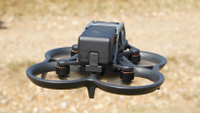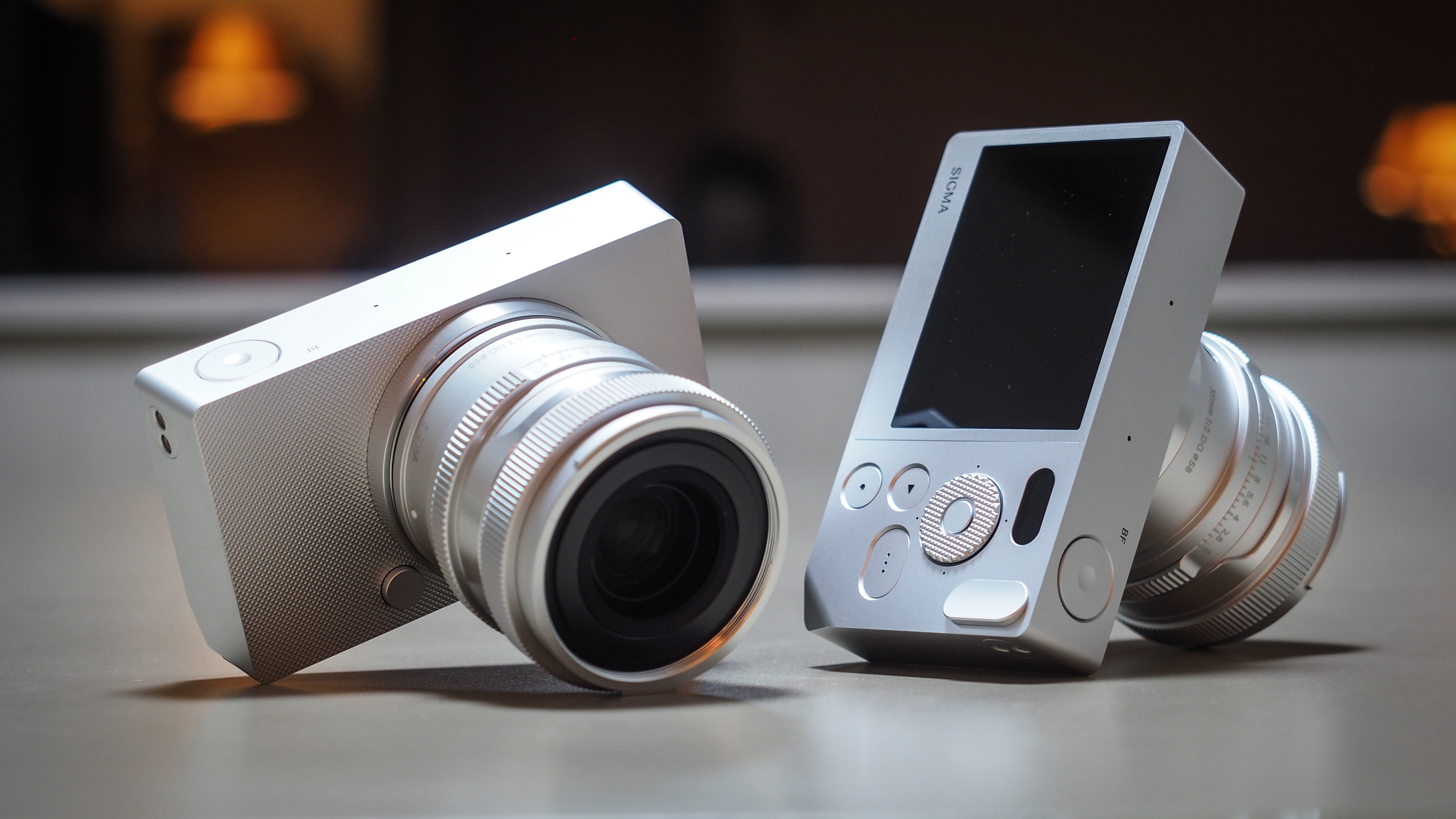Digital Camera World Verdict
This ready-to-fly kit includes everything you need to get started with FPV flight indoors and is even suitable for children. The BetaFPV Cetus Lite is inexpensive and the drone offers just one self-leveling flight mode which is slow but incredibly easy to fly making it ideal for getting used to using FPV goggles.
Pros
- +
Kit includes everything you need to get started
- +
Could be ideal for FPV beginners and children
- +
Easy to fly
Cons
- -
Goggles can’t record videos
- -
Not suitable for outdoor use
- -
Battery life is short
Why you can trust Digital Camera World
Flying FPV drones is a huge amount of fun thanks to the immersive experience wearing FPV goggles provides. You see what the drone’s camera sees, so flying FPV drones can create the illusion that you’re flying, albeit with your feet firmly on the ground. Traditionally though, they’re not easy to fly and require electronics knowledge and the ability to self-build, but that’s been changing in recent years.
Wheelbase: 65 mm
Quadcopter: Cetus Lite Brushed BNF
Tilt degree: 25° (not adjustable)
Radio transmitter: LiteRadio 1 CC2500
Glasses: VR02
Battery: BT2.0 300 mAh 1S
Flight time: 4 minutes
Flight distance: 80m
Many FPV drone manufacturers are producing ready-to-fly (RTF) kits that include everything you need to get started, including a drone, controller, goggles, batteries, and a charger. There are plenty of options out there, but the most basic, inexpensive and so easy to fly it’s suitable for children is the BetaFPV Cetus Lite Kit. At just £98 when bought directly from BetaFPV or £145 from Amazon, this is the most affordable RTF FPV kit available.
The Cetus Lite FPV Kit is aimed at absolute FPV beginners and children thanks to simple operation and limited flight modes that allow you to experience FPV flight indoors, without any complications. It’s pretty slow and the motors aren’t at all powerful, and thanks to built-in propeller guards, objects and people are pretty much safe from harm.
One key feature of the Cetus Lite is that it can hover – something that most FPV drones are unable to do. And it’s this, alongside self-levelling slow speed modes that make it so easy to fly. The motors lack the power of other microwhoop drones which makes indoor flight possible, but this lack of power also means that the Cetus Lite isn’t suitable for outdoor flight. It’s still a lot of fun and the perfect tool for adults to get used to using FPV goggles, and for children to get started with FPV drones.

betaFPV Cetus Lite: Design & Handling
The Cetus Lite FPV Kit is the most basic of the three Cetus models available in every sense. But this isn’t a bad thing because this not only helps to keep the cost down, but it also means that everything is simplified. Being a drone that’s essentially a toy for children or, indeed, adults, simplicity and ease of use cannot be overlooked.
The Cetus Lite is tiny and will sit in the palm of your hand weighing just 36g including a including a 300 mAh 1S LiPo battery. Batteries typically last around three minutes, but charging only takes around 20 minutes so you can be charged up and in the air in no time. The goggles and controller do take longer to charge their built-in batteries, but these both last much longer than drone batteries.
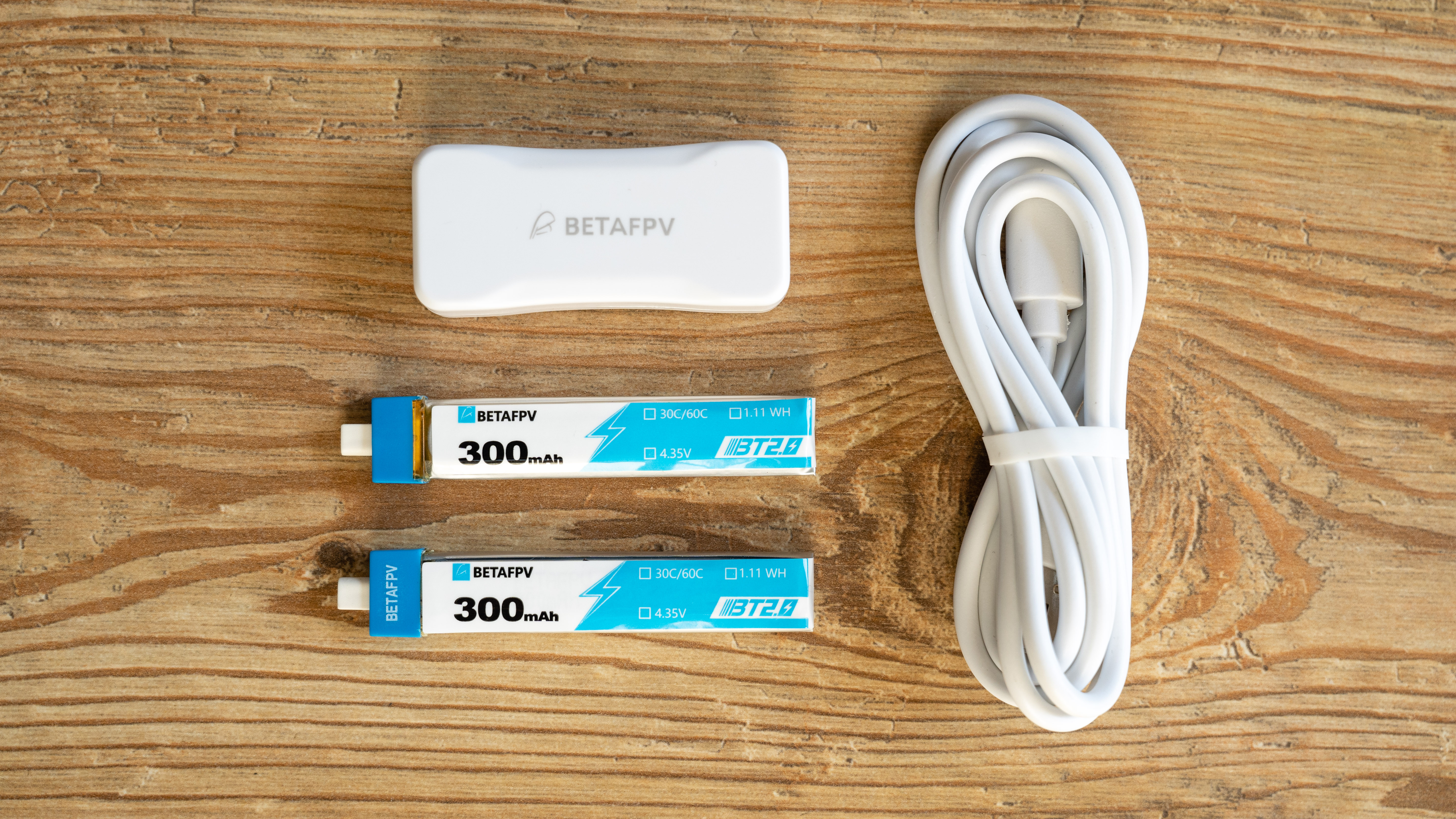
When it comes to design, the Cetus Lite is a microwhoop FPV drone with a fixed FPV camera secured within the robust PA12 plastic airframe with built-in propeller guards around and below the propellers to make it safe to fly indoors and around people. The airframe can withstand the vast majority of crashes, that will inevitably occur, and these combined with the slow speed work well in combination.
The kit includes the LiteRadio 1 controller which includes self-centring control sticks rather than the left throttle stick being non-centring like most FPV controllers. This makes flight easier, safer and means the drone stops in a hover when the throttle stick is released. There are four button controls on the controller excluding the on/off switch, but it’s only the Arm button that’s used to start and stop the Lite’s motors and another to change the speed setting from slow to fast (still slow).
The LiteRadio 1 is also small enough for use by small hands, and can also be used with FPV simulators when connected to a PC via USB-C. FPV simulators are a great way to hone your flight skills without the risk of crashes and there are both free and paid options available. The controller comes fitted with 10mm thumb sticks, but there’s also a pair of 16mm sticks in the kit that can be swapped if you prefer to pinch control sticks between your thumbs and forefingers instead of using just your thumbs.
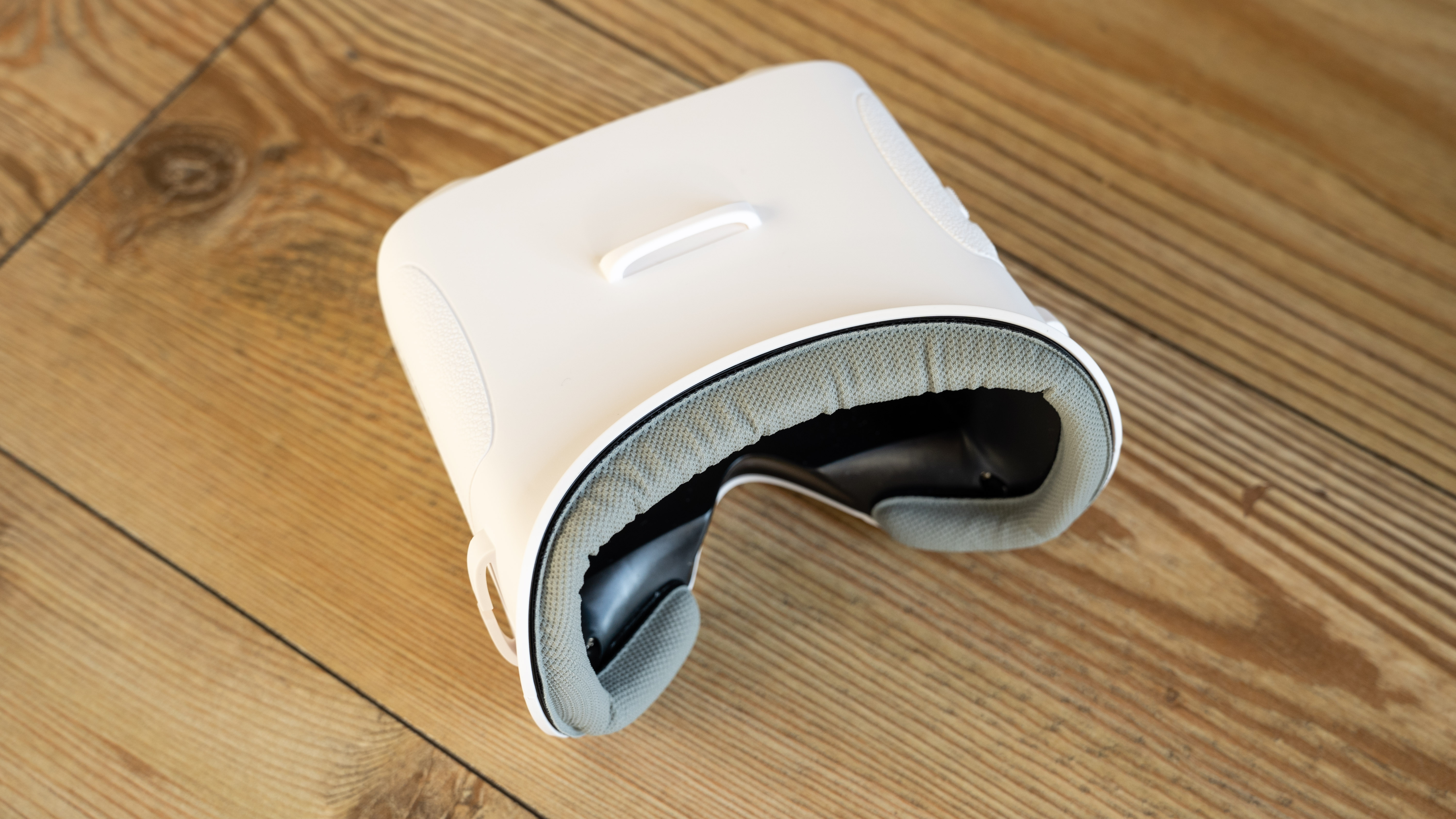
The controller and VTX (video feed) are claimed to work up to 80m, but during testing, this was far from the case when trying to fly outdoors, which isn’t recommended; it’s best to keep the Cetus Lite within 25m to avoid connection issues with both the controller and goggles which do occur beyond this short range. Not to mention, the low power of the motors means even a light breeze can overpower the drone and carry it away.
Moving onto the goggles, the kit includes the analogue BetaFPV VR02 FPV Goggles, which we’ll cover in greater depth later. These are fairly basic goggles, but they’re easy to use and work well with the Cetus Lite overall. However, unlike the other Cetus models where the connection between the goggles and drone is maintained, with the Cetus Lite they had to be paired every time the drone was disconnected from the battery but this is easy to do.
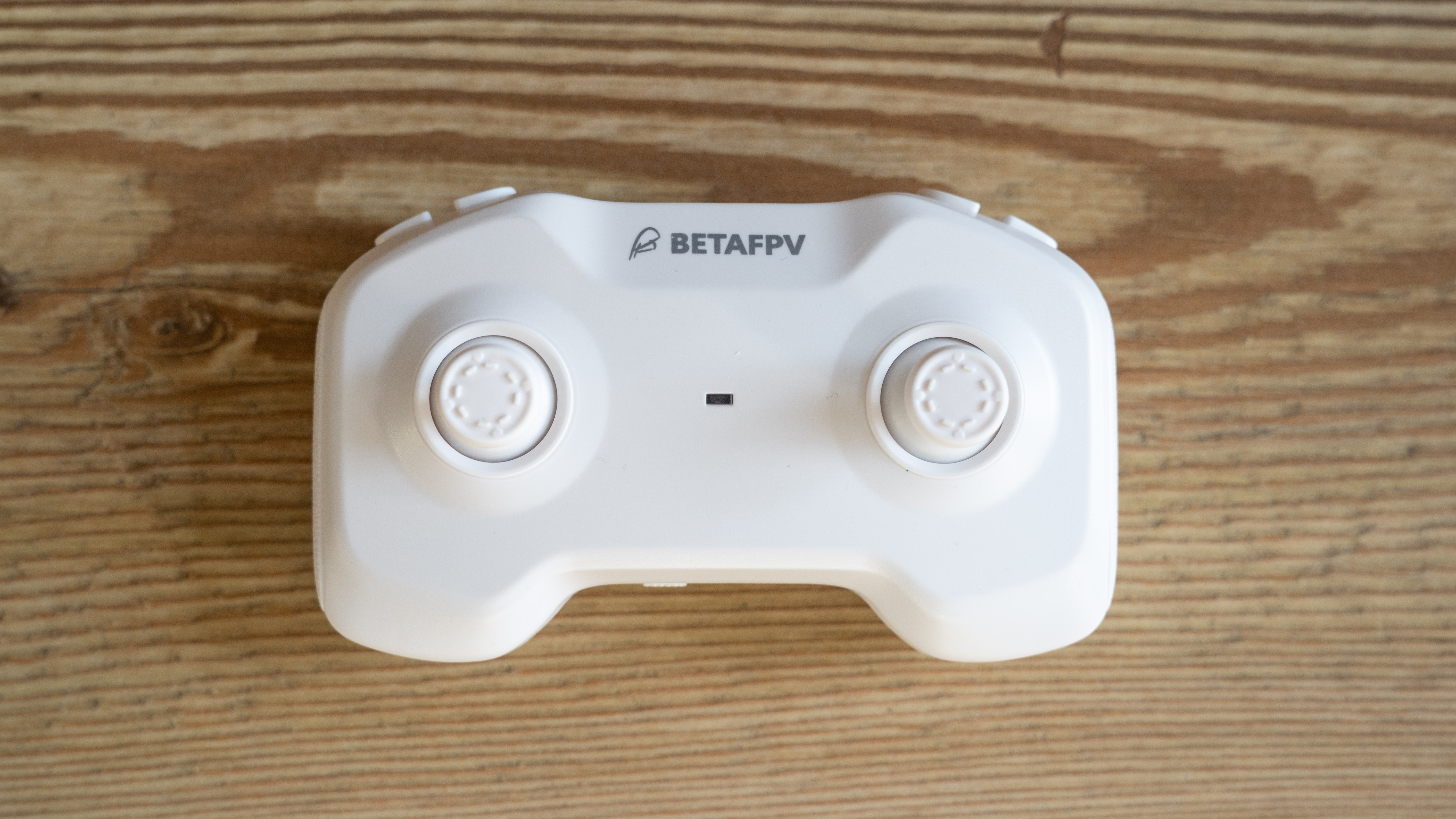
betaFPV Cetus Lite: Flight Performance
Slow and steady is the name of the game here thanks to low-power brushed motors that provide enough lift to fly, but not enough to hurtle around at speed. This may sound like a negative, but it fits the profile of the drone perfectly, making it easier to fly alongside the hover feature and self-leveling. Standard FPV drones can dive, flip, and roll when flown in manual/acro mode, which is the most exhilarating and fun flight mode, but also the most difficult.
The Lite has just one flight mode, which is Level. In this mode, the drone automatically levels when the control sticks are released and it can’t be flipped or rolled like you can when flying in angle and manual flight modes. This makes the Lite incredibly easy to fly, but it does remove the ability to progress through the different FPV flight modes available to most FPV drones as your flight skills progress.
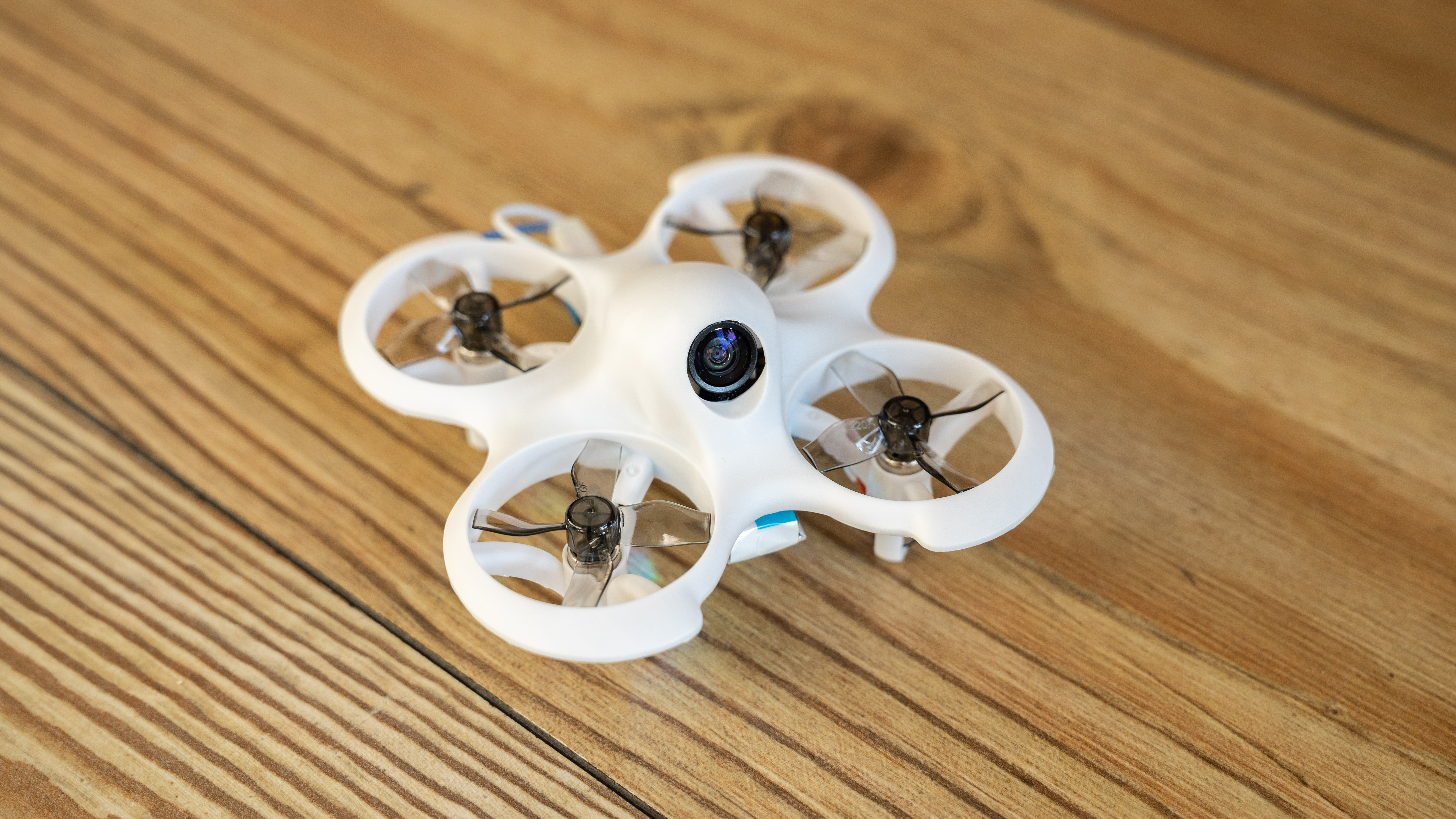
Despite this limitation, the controller does, however, follow what you might call standard FPV control so although you can’t flip, roll or dive the Lite, you still have to combine control inputs for smoother flight. For instance, to fly forwards you have to push the left throttle stick up and pitch the drone forward with the right stick. To turn smoothly while flying forward, you have to do the above while also incorporating yaw (rotate) with the left stick, and roll (flying sideways) in the same direction with the right stick.

So, although you’re not experiencing true FPV flight in manual mode, you still have to input the same controls for flight which ultimately form the basis for progression to a more advanced microwhoop drone kit in the future. In a nutshell, the Cetus Lite removes all complexity in terms of flight, except for having to get used to using FPV goggles, but once this has been achieved and doesn’t take long, you can fly under, over and around furniture and other obstacles in your house with relative ease.
Aside from the hover function and self-levelling, the Lite offers two flight speeds: slow and fast. Although both are pretty slow. Plus, when a crash is detected by the 6-axis IMU (Inertial Measurement Unit) sensor, Emergency Auto Locking automatically disarms the motors so the drone won’t flail around and potentially cause damage.
betaFPV Cetus Lite: Camera Performance
There’s no information about the camera used by the Cetus Lite available from BetaFPV, but we can take the specs of the VR02 goggles to determine the quality of the image provided between the drone and goggles via the VTX (video feed). It’s all pretty basic, with no ability to capture the VTX feed with the goggles because there’s no built-in DVR (digital video recorder), but the analogue video feed that’s provided is more than sufficient for the intended use of the drone.
The video feed is analogue, so although in colour, the feed is prone to crackling and flashing, which increases when the drone is further away and behind obstacles such as walls. It takes a little getting used to, but like an analogue TV signal, even when the image is breaking up, you can still make it out. Digital VTX and goggles provide the clearest FPV feed, but are much more expensive and have their own downsides when the signal is weak.

The VR02 goggles are box-type goggles with a mirror inside that the video feed is reflected from to the viewed. The viewable screen size is 4.3 inches with a resolution of 800x480 (VGA), so it’s low-resolution by today’s standards, but still perfectly adequate. For basic analogue microwhoops like this, and any analogue FPV drone, you can buy analogue receivers that plug into smartphones, such as the Skydroid 5.8GHz 150CH OTG FPV Receiver. These allow the VTX signal to be viewed and recorded with an FPV recorder app. But with the Cetus Lite, which has a low-power VTX, when this was attempted during test flights, the drone struggled to fly. It may have been a coincidence, but it did occur whenever the analogue receiver was active.
betaFPV Cetus Lite: Final Verdict
The BetaFPV Cetus Lite is a great little FPV drone kit for children that’s inexpensive and importantly, easy to fly. You could say it’s more of a toy than a true FPV drone, with a flight similar to camera drones thanks to self-leveling and hover functionality, but its flight controls will help children and adults get used to flying an FPV drone while wearing goggles. Is it fun? Yes. But will it take you from FPV zero to pro pilot hero? Unfortunately not.
The main advantages of the Lite are also its disadvantages; chiefly being the single flight mode that makes flight so easy ultimately limiting FPV flight progression through the flight modes available in other microwhoops, including the Cetus Pro and Cetus X. However, these drones are much more powerful and faster than the Lite, so either model could be a great upgrade option when you outgrow the Lite. Plus, the Lite is just an indoor toy FPV drone, whereas the other two can be used indoors or out.
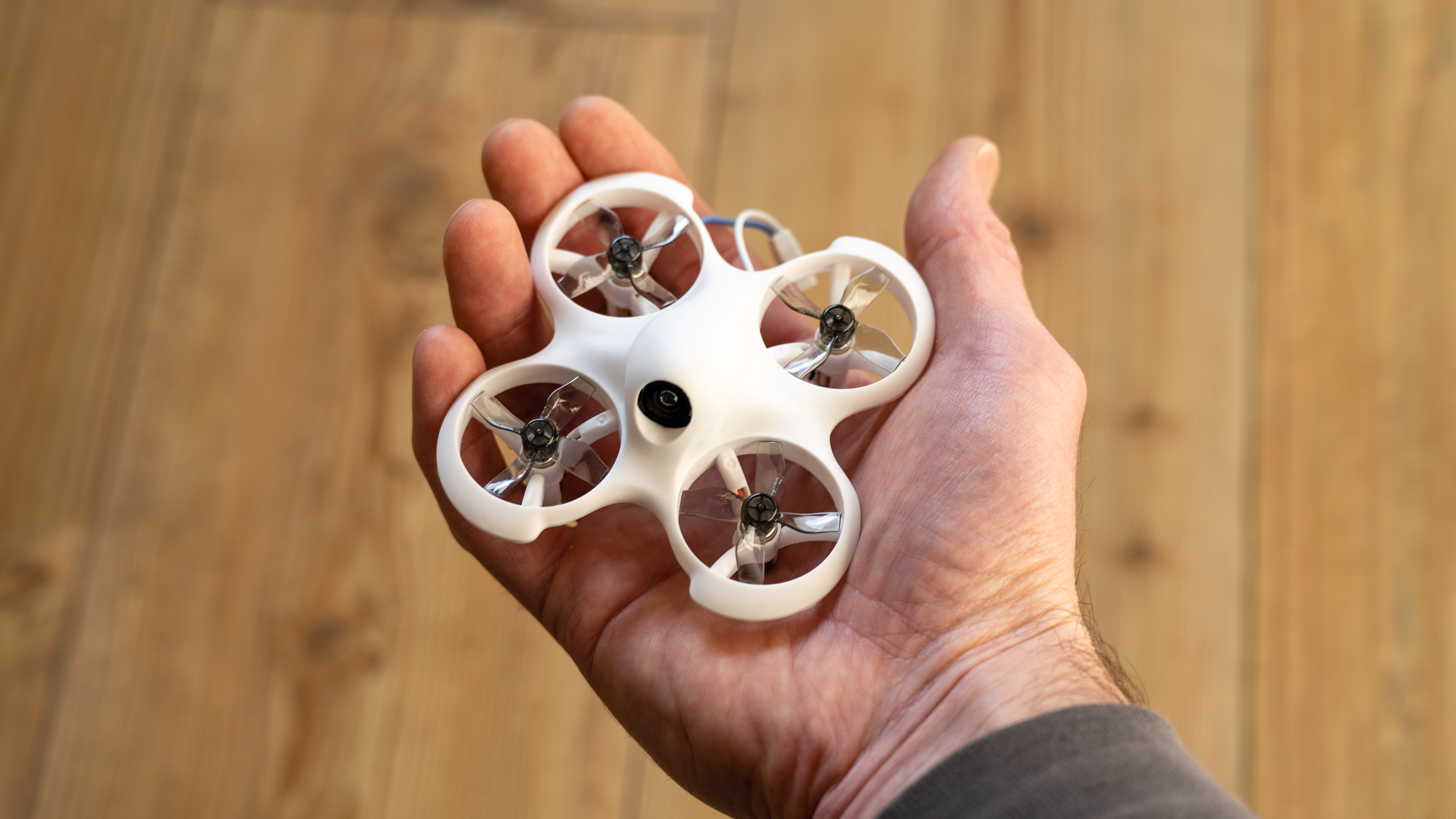
Should you buy the betaFPV Cetus Lite?
✅ Buy this if...
- You’d like to try an inexpensive FPV drone before buying a more expensive and advanced model.
- You want an easy-to-fly FPV drone that both children and adults can fly.
- You simply want to have fun with a basic drone kit that makes everything easy.
🚫 Don't buy this if...
- You’d like to fly outdoors in a larger area with obstacles to fly around and through.
- You’d like to learn how to fly in manual/acro mode for freestyle flight.
- You would like to capture immersive 4K video footage
Alternatives
The DJI Avata draws from DJI’s expertise and ease of use to deliver an FPV drone that can be flown easily by anyone with the DJI Motion Controller 2, or by expert pilots in manual/acro mode with the FPV Remote Controller 2. It can hover and capture great quality 4K video footage, but it’s not cheap.
James Abbott is a landscape and portrait photographer based in Cambridge. He’s also an experienced photography journalist specializing in camera skills and Photoshop techniques. He is also a CAA-approved drone pilot and professional aerial photographer.

